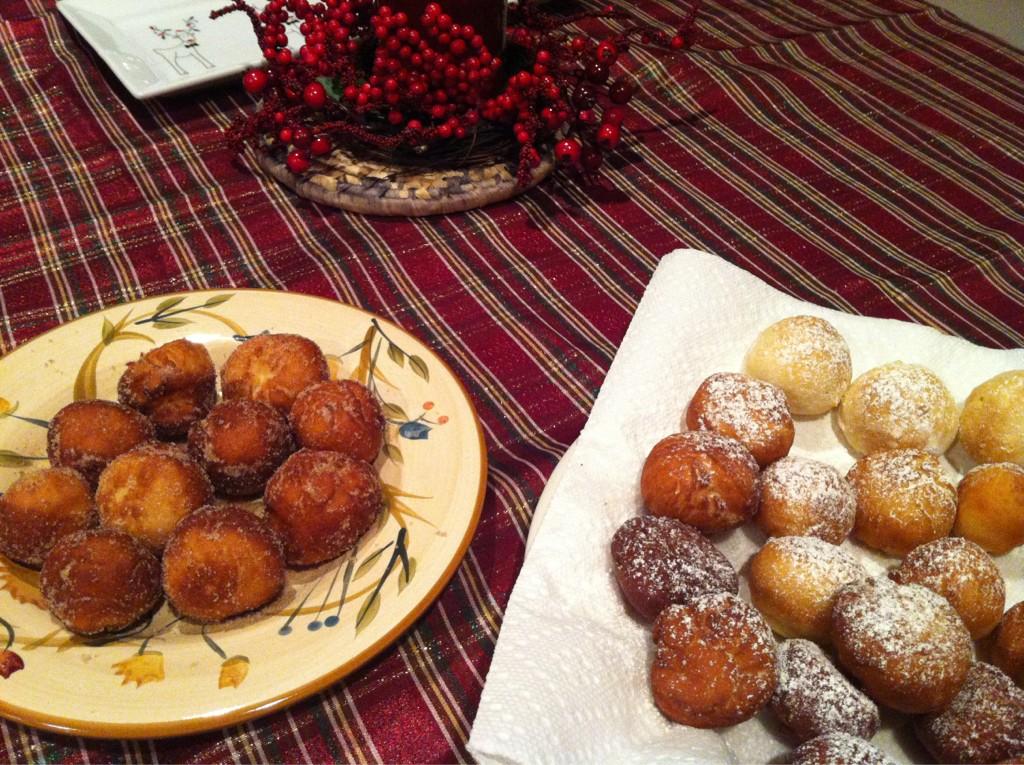 People can say what they want about Martha Stewart but she has some great recipes. My mom bought me a couple of her cookbooks, well, let's just say a while ago.
People can say what they want about Martha Stewart but she has some great recipes. My mom bought me a couple of her cookbooks, well, let's just say a while ago.My favorite one to this day is Entertaining because of the wide variety of recipes including this one for sugar cookies and her pie crust recipe.
I use this recipe for Christmas, Valentine's and Halloween; any excuse to make a rolled sugar cookie. The original recipe called for brandy which I don't have on hand so I substituted more vanilla. I also increased the salt because I like the contrast in flavor.
If you don't think you have time to make a rolled cookie, I encourage you to try this. As long as your butter is soft, it's done in less time than it takes to probably drive to the store. Plus, the flavor is just wonderful.
Here are a few tips:
- If the butter is not soft, you can soften it in the microwave using a defrost setting. Check it every 15 seconds.
- When the cookies go in the oven, set the timer for 5 minutes. Rotate the pans top to bottom; bottom to top and set the timer for another 4 minutes. At the end, the cookies bake quickly.
- Cookies should be light brown on the edges; otherwise they will be too crispy.
- Check the blog entry about baking ingredients to learn about which ingredients are best.
- Use a stand mixer like a KitchenAid or hand mixer to cream the butter. It's hard to do this by hand.
- When rolling out dough, use flour on both sides of the dough, top and bottom. Turn dough over and around to ensure it doesn't stick.
Rolled Sugar Cookies (this recipe can be doubled)
2 c unbleached white flour
1/2 tsp salt
1/2 tsp baking powder
1/2 c (1 stick) unsalted butter, softened
1 c organic white sugar
2 tsp vanilla
1 egg, room temp
1. Mix flour, salt and baking powder in a bowl with a whisk. You can sift but I have found that the results are still excellent even if you don't.
2. In a stand mixer fitted with a paddle attachment (or a bowl using a hand mixer), cream butter for 2 minutes until fluffy. Add sugar and beat until light and fluffy.
3. Add the vanilla and egg and mix until blended. You may need to turn the mixer speed to about medium to do this. You don't want to do this when you add the flour, though; otherwise the cookie can turn out tough.
4. Once vanilla and egg are incorporated, add flour in 3 additions; about 3/4 c and then mix on low. Repeat that two more times until dough comes together. Use your hands to form this into a disc (this is easier to roll) and cover with plastic wrap. It might be necessary to put some flour on your hands to do this.
5. Refrigerate dough about 30 minutes or up to 3 days. You can also freeze for 15 minutes if you are short on time or freeze to use in the future. If you do the latter, defrost in the fridge the day before.
6. Preheat oven to 375ºF (Martha suggests 400 but I found it was too easy for the cookies to become very brown). Roll out dough on a floured board and using a cookie cutter that's been dipped in flour, cut out shapes and place on buttered cookie sheets or on a cookie sheet with a silicon mat.
7. Bake cookies for 8-10 minutes, rotating halfway through. Cookies should be light brown on the edges. Keep on tray for 3 minutes and then transfer to a wire rack (this is really an important step).
8. For an easy glaze, mix 1 cup of confectioner's sugar with 1 Tbl cold water. Use this type of glaze to enable sprinkles to adhere.










